Related Research Articles
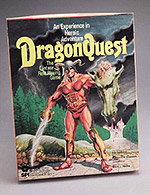
DragonQuest is a fantasy role-playing game originally published by Simulations Publications (SPI) in 1980. Where first generation fantasy role-playing games such as Dungeons & Dragons (D&D) restricted players to particular character classes, DragonQuest was one of the first games to utilize a system that emphasized skills, allowing more individual customization and a wider range of options.
In the Dungeons & Dragons fantasy role-playing game, psionics are a form of supernatural power similar to, but distinct from, arcane and divine magic.

HeroQuest, is an adventure board game created by Milton Bradley in conjunction with the British company Games Workshop in 1989, and re-released in 2021. The game is loosely based around archetypes of fantasy role-playing games: the game itself was actually a game system, allowing the gamemaster to create dungeons of their own design using the provided game board, tiles, furnishings and figures. The game manual describes Morcar/Zargon as a former apprentice of Mentor, and the parchment text is read aloud from Mentor's perspective. Several expansions have been released, each adding new tiles, traps, artifacts, and monsters to the core system.

Nox is an action role-playing game developed and published by Westwood Studios and Electronic Arts in 2000 for Microsoft Windows. It details the story of Jack, a young man from Earth who is pulled into a high fantasy parallel universe and has to defeat the evil sorceress Hecubah and her army of necromancers to return home. Depending on the player's choice of character class at the beginning of the game, the game follows three largely different linear storylines, each leading to its unique ending. In the multiplayer, players can compete against each other in various game modes such as deathmatch and capture the flag, while the freely downloadable expansion pack NoxQuest added a cooperative multiplayer mode. The game was generally well received by critics and the media.
The magic in Dungeons & Dragons consists of the spells and magic systems used in the settings of the role-playing game Dungeons & Dragons (D&D). D&D defined the genre of fantasy role-playing games, and remains the most popular table-top version. Many of the original concepts have become widely used in the role-playing community across many different fictional worlds, as well as across all manner of popular media including books, board games, video games, and films.

Paladin's Quest, originally released as Lennus: Kodai Kikai no Kioku in Japan, is a utopian/dystopian science fantasy role-playing video game developed by Copya System and published in Japan by Asmik Corporation on November 13, 1992, for the Super Nintendo Entertainment System. It was published in North America by Enix in October 1993. It was different from other role-playing games at the time, because when the player casts magic, it takes away HP instead of MP.

Mystic Towers is an isometric platform game developed by Animation F/X, and published in 1994 by Manaccom domestically and Apogee Software internationally. Originally exclusive to MS-DOS compatible operating systems, it was re-released on Steam in 2015 with Microsoft Windows and Mac OS support. It stars Baron Baldric, an old wizard with a magic staff and an array of amusing mannerisms, who must quest through twelve towers and rid them of monsters. Mystic Towers is a sequel to Baron Baldric: A Grave Adventure, a platform game in which Baron Baldric battled an evil sorcerers ancestor.
Dark Ages is a MMORPG based on Celtic mythology, originally developed by Nexon and now operated by KRU Interactive. It is loosely based on the Korean game Legend of Darkness. The American version was developed by David Ethan Kennerly who based it somewhat on the works of horror writer H. P. Lovecraft. The game originally thrived on player involvement in the management of the game and progression of the storyline, even going so far as allowing players control over in-game politics and laws.
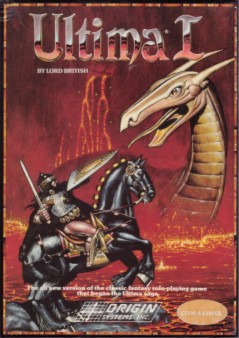
Ultima, later known as Ultima I: The First Age of Darkness or simply Ultima I, is the first game in the Ultima series of role-playing video games created by Richard Garriott, originally released for the Apple II. It was first published in the United States by California Pacific Computer Company, which registered a copyright for the game on September 2, 1980 and officially released it in June 1981. Since its release, the game has been completely re-coded and ported to many different platforms. The 1986 re-code of Ultima is the most commonly known and available version of the game.
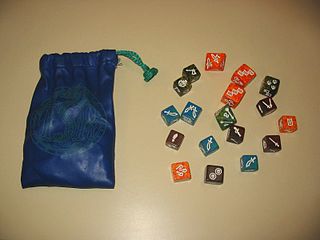
Dragon Dice is a collectible dice game originally made by TSR, Inc., and is produced today by SFR, Inc. It is one of only a handful of collectible dice games produced in the early 1990s. The races and monsters in Dragon Dice were created by Lester Smith and include some creatures unique to a fantasy setting and others familiar to the Dungeons & Dragons role-playing game.

Yu-Gi-Oh! Forbidden Memories, known in Japan as Yu-Gi-Oh! Shin Duel Monsters (遊戯王真デュエルモンスターズ封印されし記憶), is a video game loosely based on the Yu-Gi-Oh! manga and anime series. The game was released exclusively for the PlayStation console in December 1999 in Japan and in 2002 in other regions.
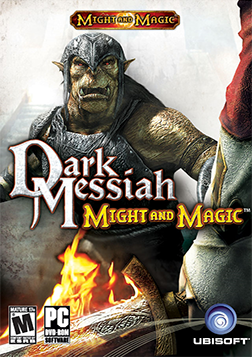
Dark Messiah of Might and Magic is a first-person action role-playing game developed by Arkane Studios. The player controls Sareth, the apprentice of the wizard Phenrig, after he is sent to the city of Stonehelm to accompany an expedition trying to retrieve a powerful artifact known as "The Skull of Shadows".

Magic Realm is a fantasy adventure board game designed by Richard Hamblen and published by Avalon Hill in 1979. Magic Realm is more complex than many wargames and is somewhat similar to a role-playing game. It can be played solitaire or with up to 16 players and game time can last 4 hours or more. The game board is a type of geomorphic mapboard constructed of large double-sided hexagon tiles, ensuring a wide variety of playing surfaces.

Tome of Magic is a handbook of rules and guidelines for the Dungeons & Dragons role-playing game. As its name implies, it is a supplement to be used to expand the magical options available in the game. It was first released for Advanced Dungeons & Dragons, 2nd Edition, and the name was reused for a book released for the 3rd Edition of D&D.

Brigandine is a turn-based strategy game for the PlayStation video game console, created by developer Hearty Robin and released in 1998. It was released in North America by Atlus the same year, under the title Brigandine: The Legend of Forsena. In 2000, Hearty Robin released an expanded version of the game called Brigandine: Grand Edition, which included multiplayer support, along other new features. In the game, the player chooses one of the nations of the fictional continent of Forsena, and has the goal of conquering the other nations by taking their castles, using troops composed of human commanders and fictional creatures. Although primarily a strategy game, it also includes some characteristics of tactical role-playing games.

Kal Online is an MMORPG created by the Korean company Inixsoft in February 2004. The player is given a choice of characters of different classes, their appearance customisable. The player can customize various attributes of their character as they progress throughout the game.
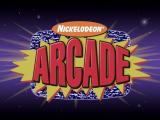
Nick Arcade is an American children's game show created by James Bethea and Karim Miteff and hosted by Phil Moore, with Andrea Lively announcing, that aired on Nickelodeon in 1992, airing originally during weekend afternoons, with reruns airing until September 28, 1997. It was taped at Nickelodeon Studios at Universal Studios Florida in Orlando. In Nick Arcade, two teams of contestants played two initial trivia rounds, with the winning team advancing to the "Video Zone" to play against the virtual "Video Game Wizard" of the day.

Vampire Season - Monster Defense is a tower defense/strategy video game produced by Colombian studio Brainz. It was released on June 28, 2012 for iOS devices.
The artificer is a playable character class in the Dungeons & Dragons (D&D) fantasy role-playing game. The Artificer first appeared as a full class in the 3.5 edition of D&D and was introduced in the Eberron campaign setting. The artificer is a unique base class that reflects many of the core themes of Eberron.
Fireside Games is a US based board game publishing company owned and operated by Justin De Witt and Anne-Marie De Witt. Based in Austin, Texas, the company was founded in 2007. They published their first game, Castle Panic in 2009, and have published several expansions and sequels as well as other titles since then.